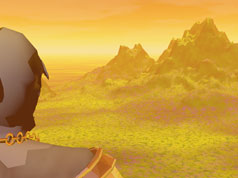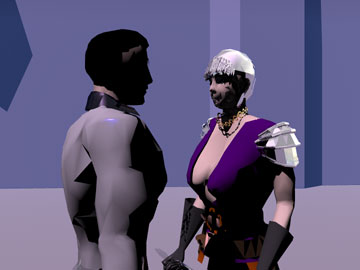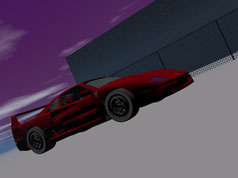Shots, Framing, Movement and Transitions
Shots:
Shots are typically described relative to their subject. Once the subject is blocked, the chosen shot imparts emotional distance, importance, or relationship.
For human and animal subjects, the extreme close-up is the nearest traditional camera shot. The full shot is the farthest shot, allowing the audience to see the whole body of the subject.

Over the Shoulder (OTS) Shot

Standard "Two Shot"
Framing:
When a subject is shot, there is always a specific amount of space between the image's edge and the subject. The edge of the viewable area is called the frame. When static shots are described, the framing height and width are somewhat determined by the type of shot chosen.
When there is little space around the subject, the framing is tight (aka tight frame or tightly framed). When there is a generous amount of space around the frame, the framing is loose (aka loosely framed).
Examples:
Click here for a diagram of framing terms*.

Canted angle
Camera Movement:
There are several commonly used terms for moving the camera. Some of these movements are common to the everyday experience, while others are only reproducable by cameras or computers. Movements that can be produced by people are called natural camera movements. These include the pull-focus and the dolly. Non-natural movements include the zoom and vertigo.
Examples:
Transition:
Transitions are used to move from one shot to the next. The simplest transition is the cut. The cut juxtaposes one shot to the next. Other common transitions include wipes, fades, and dissolves.